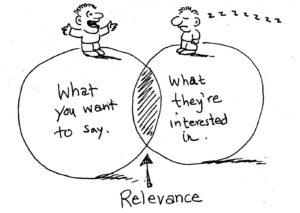Email Marketing – The Holy Trinity
 Three simple digital marketing strategies to consider when planning your next email campaign.
Three simple digital marketing strategies to consider when planning your next email campaign.
Email has come a long way since its humble beginnings in 1971 when Ray Tomlinson, an American programmer revolutionised the way we communicate forever by sending the first ever email. It took just seven years for Gary Thuerk to utilise Tomlinson’s invention as an advertising medium sending the first mass email to 393 people promoting a new line of digital equipment. In doing so he infuriated the online community, however Thuerk did report a number of sales thanks to his ingenious idea.
And so, email marketing was born. Since 1978 however, email marketing has been honed and polished, and today, email campaigns form the cornerstone of digital marketing strategies worldwide.
Subject Line – Your ten seconds in the spotlight.
The uptake of email marketing has been so immense that these days’ inboxes are saturated with promotional content. As a result, standing out from the crowd is of paramount importance for an effective email campaign. Creating a subject line that stimulates your customer’s interests should be the first consideration in the design phase. Ultimately the subject line determines whether your email gets opened or is sent straight to the trash, so make it worthwhile and give it all you got.
Many popular subject line strategies employ humour to increase opens. Take Groupon for instance. Using subject lines like “The Best of Groupon: Deals that Make Us Proud (Unlike our Nephew, Steve)” ensure Groupon’s email marketing campaigns receive the most opens. However the strategy you choose is determined by the message your email is trying to deliver and humour may not always be an appropriate tactic. Alternatively, why not try a “Reasons to” or a “Top five” subject line to communicate a concise message. Still struggling? Don’t worry there are hundreds of online utilities to help you get the most out of your email campaign, such as Mail Chimps Subject Line Tool, which can give your campaign the little bump it needs.
Audience Relevant Content
 Having mastered the subject line, you must now consider what to include in your email. Audience relevant content engages the customer and promotes a valuable relationship with your company. For instance, some products may only be of interest to a particular set of customers. Take expectant mothers for example, sending information about high end consumer goods may not interest expectant mothers as much as content regarding cribs and cradles. In order to avoid content mishaps, a persona driven content calendar can prove an invaluable resource. Serving as a roadmap, it clearly lays out what content to include on a weekly basis to stimulate your customer’s interests. Good content calendars incorporate real world tie-ins that directly affect your customers. A children’s activity company might include a “Top 5 activities for the School Holidays” in your email to inform the recipient, but it can also to promote activities the company provides without forcing them upon the customer. Feeling out of your depth? Check out this “How to” guide from Convince and Convert here http://www.convinceandconvert.com/social-media-strategy/how-to-build-a-content-calendar-plus-a-free-template-for-2014/
Having mastered the subject line, you must now consider what to include in your email. Audience relevant content engages the customer and promotes a valuable relationship with your company. For instance, some products may only be of interest to a particular set of customers. Take expectant mothers for example, sending information about high end consumer goods may not interest expectant mothers as much as content regarding cribs and cradles. In order to avoid content mishaps, a persona driven content calendar can prove an invaluable resource. Serving as a roadmap, it clearly lays out what content to include on a weekly basis to stimulate your customer’s interests. Good content calendars incorporate real world tie-ins that directly affect your customers. A children’s activity company might include a “Top 5 activities for the School Holidays” in your email to inform the recipient, but it can also to promote activities the company provides without forcing them upon the customer. Feeling out of your depth? Check out this “How to” guide from Convince and Convert here http://www.convinceandconvert.com/social-media-strategy/how-to-build-a-content-calendar-plus-a-free-template-for-2014/
Analyse and optimize to improve your campaigns.
 So what is analysis and optimization? Simply put, this is a marketing term for looking at the results and making changes to improve your campaign based on those results. For years, marketers have employed direct mail campaigns to promote their products and services. Marketing campaigns conducted via direct mail have experienced limited success, however, the lack of analysis they offer become its most prevalent downfall. In contrast, email marketing campaigns are ready equipped for analysis and optimization through most email marketing solutions. Understanding “Open” and “Bounce Rates” should be the first port of call for any email marketer, however placing value on alternative measurements can offer greater insight. While “Click Rates” are important, taking a broader view of this measurement can prove fruitful. For example, content receiving multiple clicks from your customers is a good yardstick to determine content relevancy, while identifying the most followed links of an email can tell you what type of link to include in future campaigns. Measurements such as these can lead to a greater understanding of your customer, which can be used to design content accordingly in future. Measurements vary from platform to platform and these are just a few to consider for your next campaign. Check out Mail Chimps report section to find out more at http://mailchimp.com/features/reports/
So what is analysis and optimization? Simply put, this is a marketing term for looking at the results and making changes to improve your campaign based on those results. For years, marketers have employed direct mail campaigns to promote their products and services. Marketing campaigns conducted via direct mail have experienced limited success, however, the lack of analysis they offer become its most prevalent downfall. In contrast, email marketing campaigns are ready equipped for analysis and optimization through most email marketing solutions. Understanding “Open” and “Bounce Rates” should be the first port of call for any email marketer, however placing value on alternative measurements can offer greater insight. While “Click Rates” are important, taking a broader view of this measurement can prove fruitful. For example, content receiving multiple clicks from your customers is a good yardstick to determine content relevancy, while identifying the most followed links of an email can tell you what type of link to include in future campaigns. Measurements such as these can lead to a greater understanding of your customer, which can be used to design content accordingly in future. Measurements vary from platform to platform and these are just a few to consider for your next campaign. Check out Mail Chimps report section to find out more at http://mailchimp.com/features/reports/


 New to Blog Writing? Here is what you need to know.
New to Blog Writing? Here is what you need to know. What is a mobile friendly website
What is a mobile friendly website Search Engine Optimisation
Search Engine Optimisation